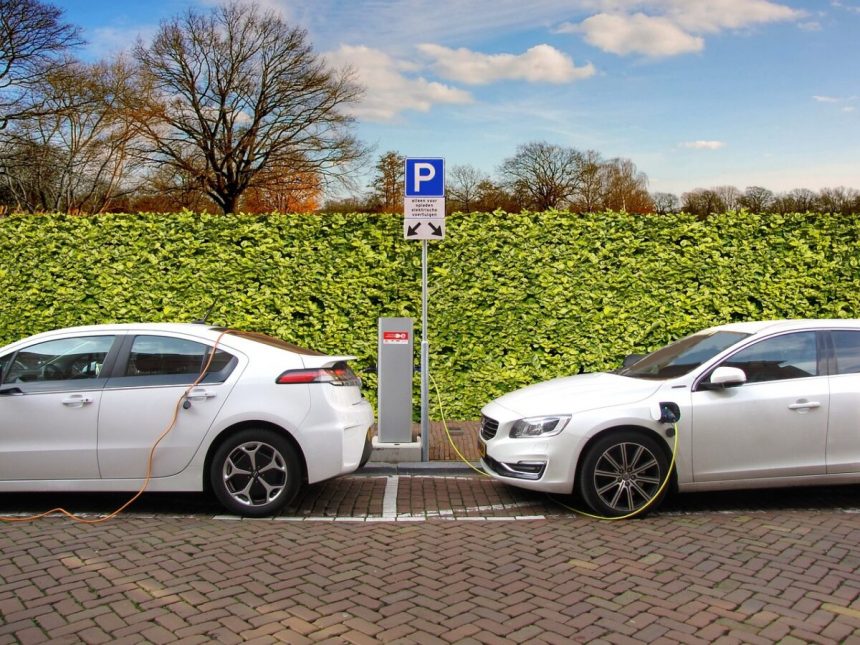One of the politically destructive strands of environmental advocacy criticizes material consumption and attempts to make people feel guilty for air travel and other forms of behavior that pollutes the environment. Taylor Swift is attacked for flying to her many places of work by private jet. Billionaires are attacked for flying in private jets to climate conferences. Families owning SUVs are criticized for owning large, fuel inefficient vehicles. The argument seems to be that we should sit alone in the dark with a candle if we want to protect the planet. The goal appears to be to slow down the economy and reduce economic growth. My view is that this is not a realistic nor effective way to achieve environmental sustainability. The world of over eight billion people is a complicated and interconnected place, and the world economy needs to function if we are to have material necessities and security from armed conflict. Consumption is not the problem, and attacking consumers is a losing political strategy. The political pressure to maintain and grow wealth in both developed and developing nations is real and ferocious. As James Carville famously said during Bill Clinton’s first presidential run: “It’s the economy, stupid.” There is a reason that economic wellbeing is nearly always the top issue in a presidential campaign. People want and demand the necessities of life and more. The absence of economic growth leads to political instability which in turn can result in armed conflict and terrorism. Human society and culture, economic development, politics, and environmental quality are interconnected and interdependent systems. We need to change the nature of consumption and economic growth, not economic growth itself. We need to understand and reduce the environmental impact of consumption, but we also need empathy for people who live differently than we do. Meat may have a higher carbon footprint than vegetables, but in some cultures, its significance is not simply as source of protein. Until we create a jet fuel that is renewable, consumers have no choice but fly on jets that use fossil fuels. If someone has the resources and need to fly private, attacking that consumption is no way to build political support for environmental sustainability. Our goal should be to consume products and services with the least possible planetary impact. While I think Taylor Swift should travel any way she wants, I am less happy with the revival of vinyl records that she and her fellow pop artists are promoting. It’s true that vinyl recordings produce better sound quality than streaming music, but streaming music has a very small environmental impact and the manufacturing of vinyl results in significant toxic chemical pollution. Streaming is an adequate form of recorded music, and if better sound quality is sought, listeners might consider attending a live concert. Nevertheless, consumption of vinyl records is growing. According to Rachel Lerman of the Washington Post: “Music fans may love the immediacy of streaming music, but that hasn’t stopped them from bringing vinyl records mainstream. Revenue from vinyl jumped 10 percent to $1.4 billion in 2023, and outsold CDs for the second time since 1987, according to the Recording Industry Association of America. Artists like Taylor Swift, Beyoncé and Kacey Musgraves are leaning in, releasing vinyl albums with new colors, cover art and, sometimes, exclusive tracks.” Musicians like Neil Young may argue that vinyl is an important medium to realize their artistic vision, but they should understand and acknowledge the environmental cost they are incurring. In other words, there is an alternative to vinyl, and environmentalists should encourage its use. Still, I would not spend any time or effort fighting this form of consumption, instead I would promote the positive environmental virtues of streaming. If someone wants to buy a vinyl record, they can always find another way to protect the planet. More and more of our GDP is in services and among those services are design, game development, entertainment, education, web design, and other forms of consumption that have very little impact on our environment. The main resource they consume is energy and as we decarbonize our energy system that impact will be lower. The nature of consumption in the developed world is changing. One of the most visible changes is the amount of time people spend viewing and interacting with their smart phones and computers. Those behaviors are forms of economic consumption that add to our quality of life and add to the GDP but have little negative environmental impact. Activities that add to human wellness are also forms of economic consumption. Riding a bicycle, playing ball, going to a gym, engaging a trainer or physical therapist are also forms of consumption that are growing but have little environmental impact. A fully equipped gym has lots of equipment that requires manufacturing that probably caused pollution, but all that equipment is shared, reducing the per capita impact of our consumption. The goal should be to channel consumption, not end it and certainly to stop shaming people who consume. The arrogance of advocates shaming consumption needs to be understood. A suburban family with an SUV or a person living in a rural area with a pickup truck have different transport needs than an urban vegan who rides a bike to work. We need to build empathy and understanding of people who live differently than we do. Rather than attacking consumption and consumers, we should promote research and public policy that reduces the environmental impact of consumption. Some of our efforts to channel consumption to reduce pollution have backfired. The transition from the internal combustion engine to electric vehicles (EVs) has seen useful approaches to public policy along with misguided efforts. When we transitioned from horses to motor vehicles, we did not tax or ban the horse. The motor vehicle was simply a better way to get around. The motor vehicle never got tired or sick, it didn’t defecate in the street, and once there were enough gas stations on the road, its range was virtually limitless. Government subsidized the new technology by building paved roads and highways. It also regulated driving and auto safety. In the 21st century an analogous policy might be the effort to subsidize charging stations for elective vehicles. Tax credits for electric vehicles were a useful way to lower their price before they achieved economies of scale. Government purchases of EVs by the U.S. Postal System and grants for electric school busses were other useful ways to accelerate EV adoption. But laws to eventually ban the purchase of internal combustion engine vehicles in California, and national regulations requiring a company’s fleet of vehicles to achieve gas milage efficiency that could only be achieved with huge increases in EV sales, are in my view, misguided policies. They open advocates of environmental sustainability to the charge that they are telling consumers what to buy. That is probably because they are telling consumers what to buy. It would be difficult to design a policy more counterproductive. People will buy EVs when they are better and less expensive than current vehicles. These are big-ticket purchases and people will not by EVs until they are convinced they meet their needs. All that California’s ban on the internal combustion engine will achieve is increased sales of traditional motor vehicles in Nevada and other states bordering on California. Compulsion is the wrong approach. It stimulates political opposition that can be avoided by focusing on carrots rather than sticks. Limiting consumer choice, like shaming consumption gives environmental sustainability a negative image. We need to promote a positive vision of environmental sustainability. Environmental sustainability enables consumption that does not destroy the planet. It can result in exciting and meaningful lifestyles. Environmentally sound consumption identifies the environmental costs of consumption and seeks to reduce those costs. EVs are far from a pristine technology. The batteries are loaded with toxics and like all manufactured goods today, their production pollutes. But they can run on renewable energy where it’s available, and engineers are hard at work trying to develop battery technologies that do not rely on rare earth metals and can easily be recycled. But the best way to accelerate EV adoption is to make a cheaper and better EV. The best way to achieve environmental sustainability is to develop a circular economy with services and products that have the least possible impact on the environment.






